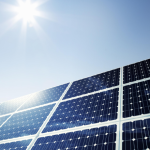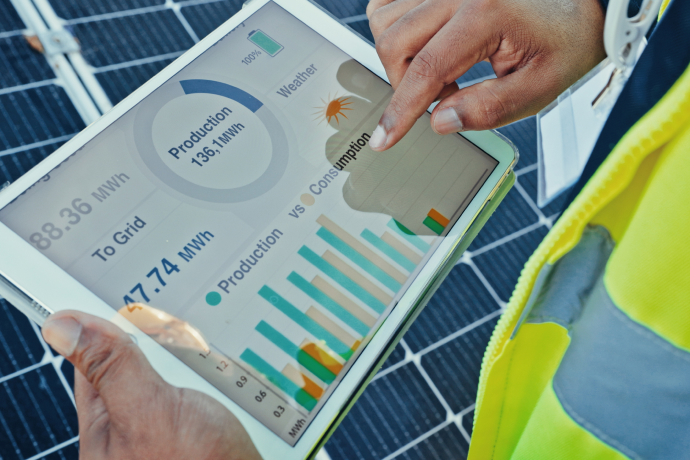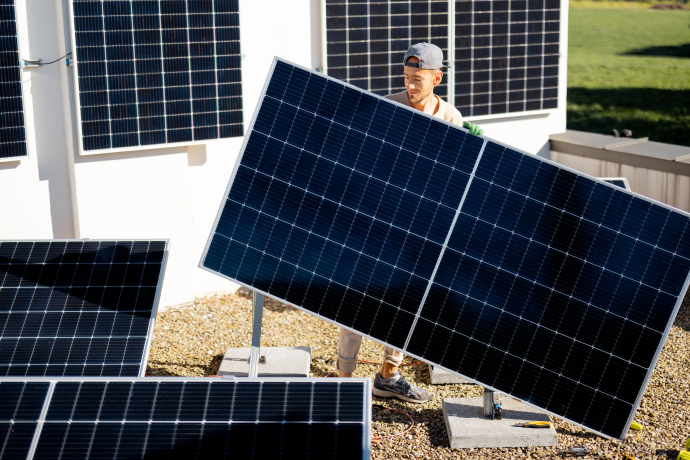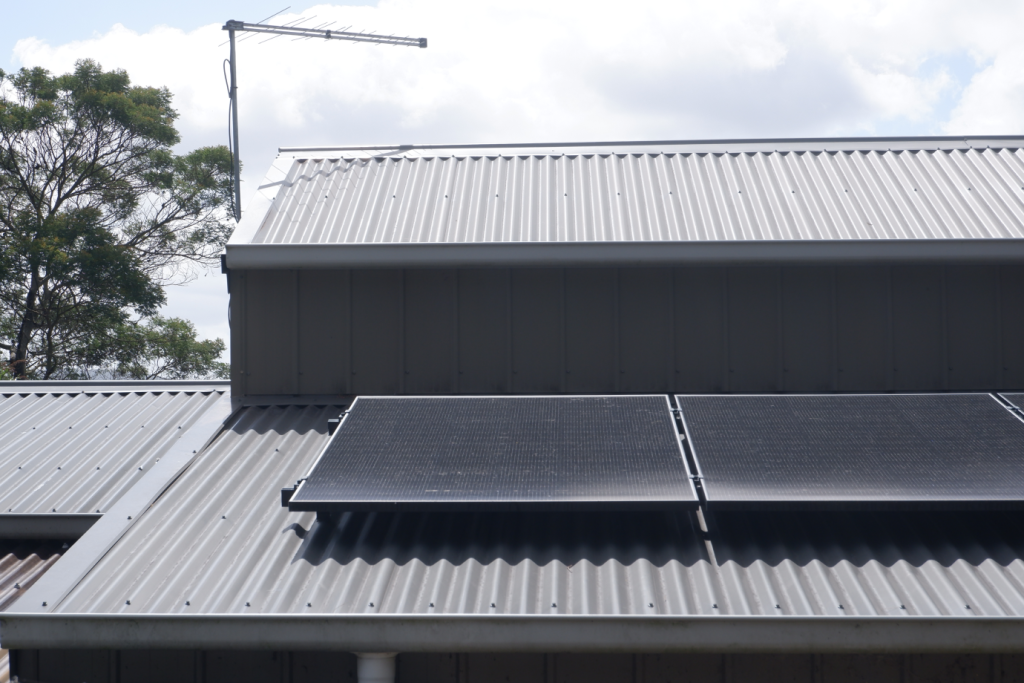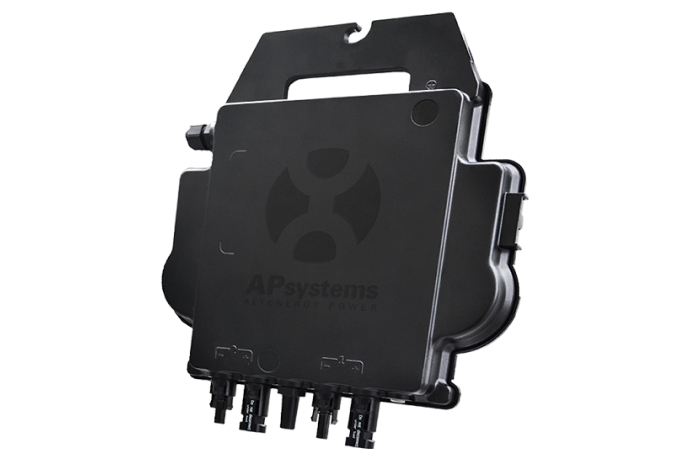Thousands of Tasmanians are making the leap to solar each year, allowing them to generate their own renewable energy and reduce their electricity bills. If you’re considering solar panel installation, it will be important to choose the right financing plan to fulfil your needs. These options range from buying upfront to taking out loans or choosing to install under a solar lease or power-purchase agreement (PPA). There are also additional discounts available to Tasmanians in the form of federal or state rebates, which can dramatically reduce the upfront costs. Our guide will unpack each of these options while also explaining the factors that will dictate which plan will be best suited for you.
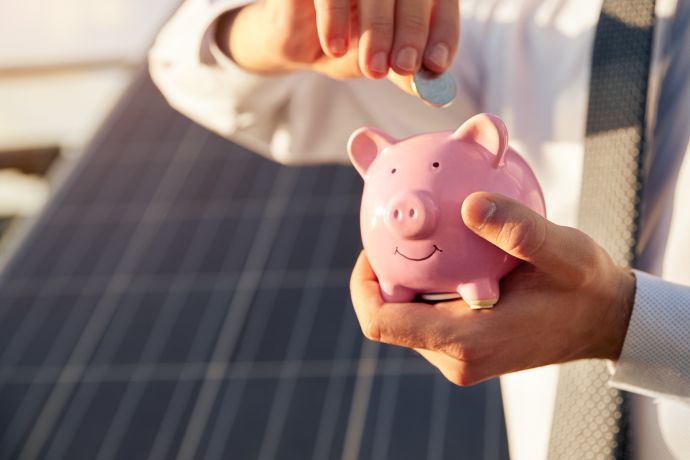
How Much Do Solar Panels Cost?
The average cost of residential solar panel installation in Tasmania is between $6,000 and $13,500 for panels up to 10 kW (kilowatt). The exact cost of your panel installation will vary depending on your capacity (measured in kilowatts), in addition to your location, product quality, and solar installer.
Below is a table of the estimated cost for a fully installed system in Tasmania. We have included higher-end prices to reflect installations using more premium-quality technology, with lower-end prices representing a budget-friendly option.
| Capacity | Cost |
| 3 kW | $4,000 – $5,500 |
| 4 kW | $4,500 – $6,500 |
| 5 kW | $5,000 – $8,500 |
| 5.4 kW | $5,200 – $9,000 |
| 6 kW | $5,500 – $9,500 |
| 6.6 kW | $6,000 – $10,000 |
| 7 kW | $7,000 – $10,500 |
| 8 kW | $8,000 – $11,500 |
| 10 kW | $8,500 – $13,500 |
| 15 kW | $13,500 – $18,500 |
| 20 kW | $17,500 – $22,500 |
*Note: your prices may vary depending on your solar installer. Additional costs may also apply for electrical upgrades or more complex installations. This also does not reflect the additional costs for installing a battery or additional inverters.
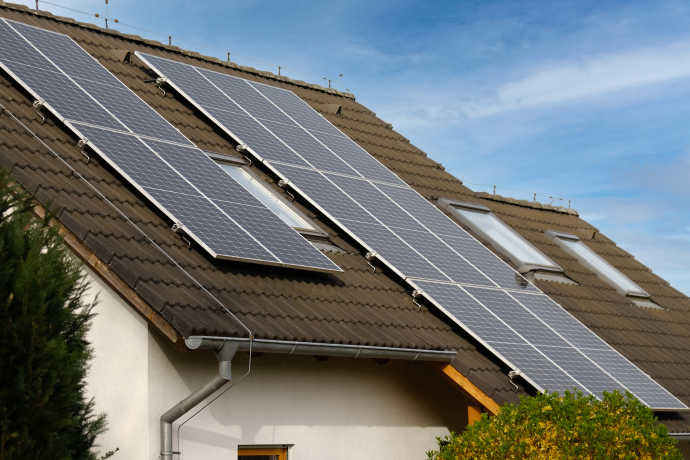
Ways to Finance Your Solar Panel System
Here are the seven common ways Tasmanians can finance their solar panel installation:
Buying solar panels outright
If you have the funds available, paying upfront is the most straightforward option. This means you own the system outright from the start, which gives you complete control. Furthermore, by paying upfront, you don’t have to worry about paying interest over time, allowing you to recoup your electricity bill savings and start paying back the cost right away.
This financial option is great for anyone who has the available savings. In particular, debt-free retirees with significant funds want to make a smart investment with little undue risk. Although for many people, the upfront cost can be a challenge, even with government rebates factored in.
Government Rebates and Incentives
Understanding the rebates and incentives available to you will ensure you are better prepared to finance your solar panels. For Tasmanians, there are rebates at both the federal and state levels to support your new installation.
Firstly, Tasmanians are entitled for the federal government’s Small-scale Technology Certificate (STC) program, which offers generous discounts on the cost of your system. By installing solar panels, you create STCs, which have a value that can be redeemed by selling them. Your solar installer will incorporate this value into the upfront cost of your panels, which may reduce their price by an average of around 30%.
Previously, Tasmanians were eligible for the Energy Saver Loan Scheme, offering interest-free loans of up to $10,000, with repayment terms of up to three years. However, this program has closed to new applicants, as of September 2025. Luckily, at Tasmanian Safer Solar (TSS), we offer interest-free loan packages, with more flexible repayment periods of between 3 and 5 years. Please contact our team for more information.
Green loans
These loans are a form of credit provided by financial institutions that are designed specifically for purchasing renewable energy and solar products. Green loans will typically have lower interest rates than standard personal loans, with flexible repayment periods of between 1 and 10 years. If you can’t afford to purchase your system upfront, then choosing a green loan is widely considered the next best option.
However, it’s important to always be aware of additional costs as part of your loan setup. You may encounter added fees for applying, early repayment, or monthly servicing, which may set you back. Furthermore, green loans typically have stringent eligibility requirements, and institutions may only provide approval to individuals purchasing verified solar products with a good credit score.
Standard Personal Loans
If you can’t get access to energy loans, then a standard personal loan could be a viable alternative. This method involves borrowing money directly from a bank, credit union or online lender with eligibility based on several factors, including income or credit score. Depending upon your lender, amounts may range from $1,000 to $80,000 with repayment periods of between 1 to 7 years. While they aren’t designed explicitly for solar energy, they do offer flexibility. Unlike energy loans, which only apply to solar products and often require you to have pre-sourced your panels, a personal loan is pre-approved, meaning you get cash in hand straight away without proving your intentions to purchase solar.
This is considered a middle-of-the-road choice, and although personal loans typically have high interest rates (at between 6 to 22% depending on your lender), some people may prefer this rate to encourage faster repayments.
Adding To Home Mortgages
You could also choose to integrate the expense of your solar panels into your home mortgage. This allows you to spread the cost of your system over the lifespan of your mortgage, potentially making it more manageable. Particularly because of the low mortgage rates in Australia (currently around 6%), borrowing extra money to cover the cost of solar may be a smart choice.
However, there are downsides to this approach that must be strongly considered. It takes a long time to pay off a home mortgage, and adding more debt could result in you paying more for solar installation overall. This approach shouldn’t be conducted unless you have a sound understanding of your finances, and you’ve received independent advice from your mortgage broker.
Power Purchase Agreements (PPAs)
By choosing a PPA, your solar installer will add panels on your roof for no upfront cost. However, in return, you no longer have ownership of the panels. Instead, you agree to buy the solar energy they produce at a predetermined rate less than what you’d pay the electricity grid. For instance, you may be paying the grid $0.28 per kilowatt-hour (kWh), which could be reduced to $0.15 through PPAs. By taking this option, you can still benefit from solar energy without taking the burden of responsibility for maintenance.
However, this option has a significant drawback. Under a PPA contract, you are required to pay for a minimum amount of electricity, regardless of how much you use. This means you could end up paying for unnecessary energy that you would usually store in your solar batteries. This is why PPAs aren’t recommended for your average home, and only for businesses or properties with high daily energy use.
It’s important to note that PPAs are relatively uncommon across Australia for residential applications, and are more common on larger-scale industrial projects, as well as other countries like the United States. For most Tasmanian households, other financing options are more accessible and practical.
Solar Leasing
Similar to a PPA, a solar lease refers to when your solar panels are supplied and installed with no upfront costs. Under this agreement, your solar installer owns the panels until the full amount has been paid through fixed monthly repayments, usually over the course of a period of 10-20 years. This can be a great option because the monthly costs are typically more affordable than the savings accrued by installing solar panels yourself. Because you don’t own your system, you also aren’t responsible for the upkeep and general maintenance.
However, under this arrangement, you don’t have access to your system, which means you aren’t eligible for government rebates and incentives that reduce your total cost. Solar leasing also comes with a fixed, long-term contract that lacks the flexibility of other options. The outstanding loan balance must be settled by you, so if you choose to sell your house, this cannot be transferred to the new homeowner and must be paid off. Particularly with the longer payment period of solar leasing, this may not be for everyone with the lack of flexibility.

How To Choose The Right Solar Financing Option
If you’re unsure about which financing option is the best for installing solar panels, consider the following factors:
Please note: this is for general guidance only and should not be treated as financial advice. Please consult with your financial advisor to determine the best option for your individual circumstances.
- Check interest-free loans and government rebates.
If you cannot afford to pay for your new solar panels upfront, your first point of call should be checking your eligibility for any government rebates, especially those unique to Tasmania. These are usually the next best way to finance solar panels after paying with cash. Although some programs, such as the Energy Saver Loan Scheme, have closed to new applicants, there are still rebates that apply to you. As previously mentioned, the Small-scale Technology Certificate (STC) program can reduce the cost of your new system by approximately 25% to 30%, depending on your location and system size. To check your exact eligibility for this program or other government rebates, please visit their website here. - Think about your long-term goals.
The best financial option will also be the one that is best aligned with your long-term future. For instance, if you are unsure about your living situation, you may prioritise a financial approach with flexibility, such as a personal loan. Furthermore, if you plan on living in a home long-term, you may want to consider adding your panels to your home mortgage. Assessing your future will be vital to making the right financial decision. - Evaluate total system cost and savings.
Your first step should be evaluating the total system cost of each financing option. Should involve unpacking how each option potentially alters your final price, with interest rates, ongoing payments for leases or PPAs factored in. This will allow you to determine the best affordability and cost-effective option for your budget. Also important to consider how much money you plan to save each year with solar. This can help you identify the best option for you. For example, if you’re aiming for significant long-term savings with your solar panels, then a short-term, interest-free loan may be the right choice. With lower interest, you can pay off your solar panels faster to maximise your finances. - Assess your budget and credit score.
Considering how much you can afford to pay. If you have the financial means, you may choose to buy your new panels up front. However, your budget may dictate more manageable monthly payments, such as a solar lease or PPA. Ultimately, budget considerations will inform how quickly you pay back the cost of solar panel installation. - Consider interest rates and terms.
Understand the varying interest rates and terms of different financing options. Choosing a plan with a lower interest rate, for instance, may significantly reduce the total cost of your solar panels. Although lower interest rates don’t always mean better. For example, some interest-free loans may hide additional costs. - Consider establishment fees.
Establishment fees are important to consider, particularly for loans. Also known as the upfront fee, these are charged at the start of your loan period, and cover administrative costs and for processing your application. Different loans will have different establishment fees, with some as high as $200-$300, while others may have $0 upfront costs. Although $0 sounds great, it’s important to be aware of hidden costs, as these options usually have higher interest rates. - Consider exit fees.
Some finance contracts may have penalties for early exit or require you to pay off the outstanding balance, while others may have greater flexibility. For instance, depending upon your contract, many solar PPAs can also allow you to transfer solar panel ownership for improved flexibility. - Watch out for hidden costs.
Don’t skip the hidden costs. If a deal appears too good to be true, there are usually added costs that need to be considered. For example, some interest-free loans include clauses for missing a payment deadline, which can result in hefty penalties or interest charges being applied. Also if a company offers an interest-free loan that isn’t through the government, it’s important to consider the total cost. These options usually involve a 15-25% fee paid by the merchant to the financing company. In order to make up the difference, the price you pay may be higher. So even though there is technically no interest, you may be spending more. Never take a financial deal at face value, as we recommend conducting your own research first and comparing different options. - Compare Multiple Quotes.
Vitally important to make price comparisons from different solar installers. This allows you to compare the costs, interest rates, ongoing fees and repayment terms to find the best option to suit your needs. This also gives you leverage during negotiation periods to potentially get a better deal.
Buying a solar panel installation can be an exciting investment, and by finding the right financial option to suit your needs, you can set yourself up for an affordable future. Your different options will include purchasing upfront, applying for various loans or choosing to set up your new panels in a leasing agreement or PPA. Federal or state rebates are also great alternatives for assisting with your purchase. Deciding between these options can be tricky, and if you are still unsure after reading our guide, please reach out to our knowledgeable team at Tasmanian Safer Solar for the most up-to-date advice.


